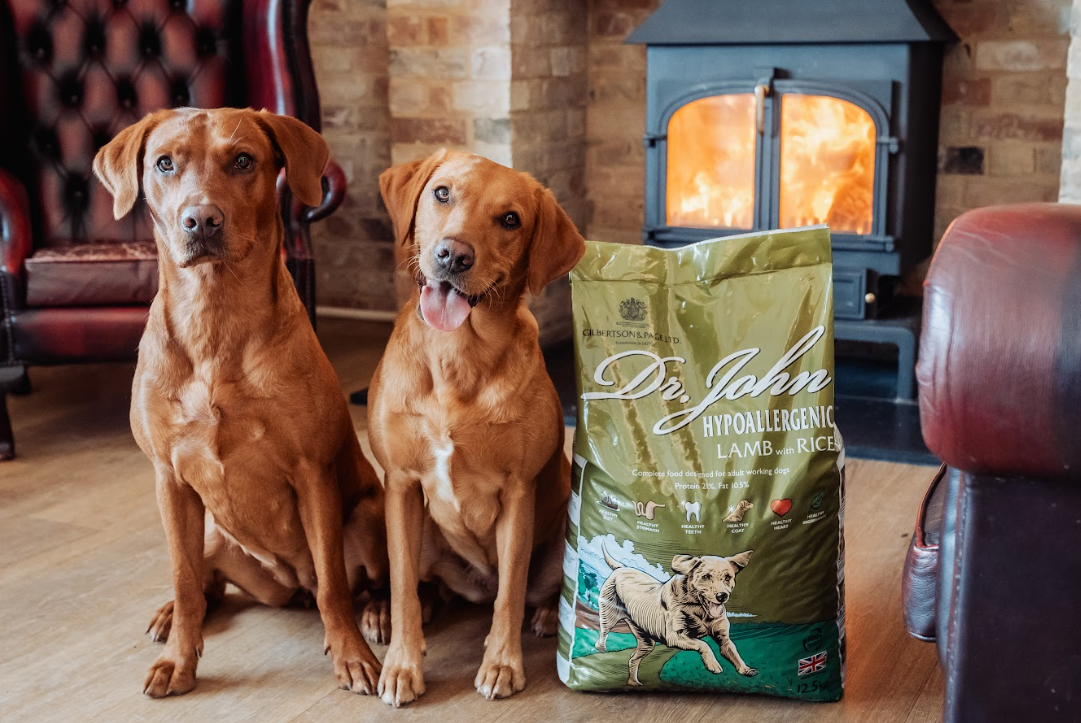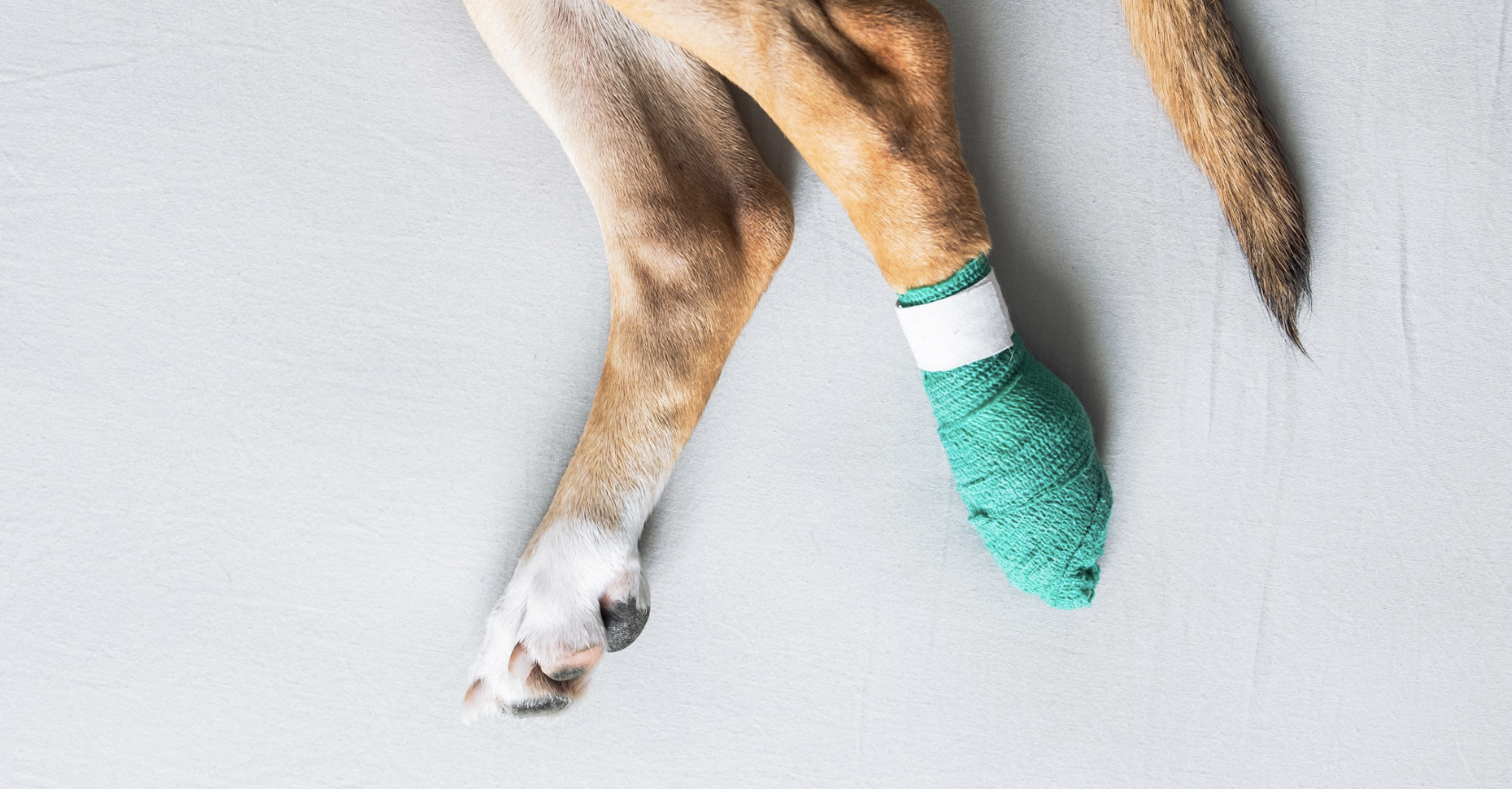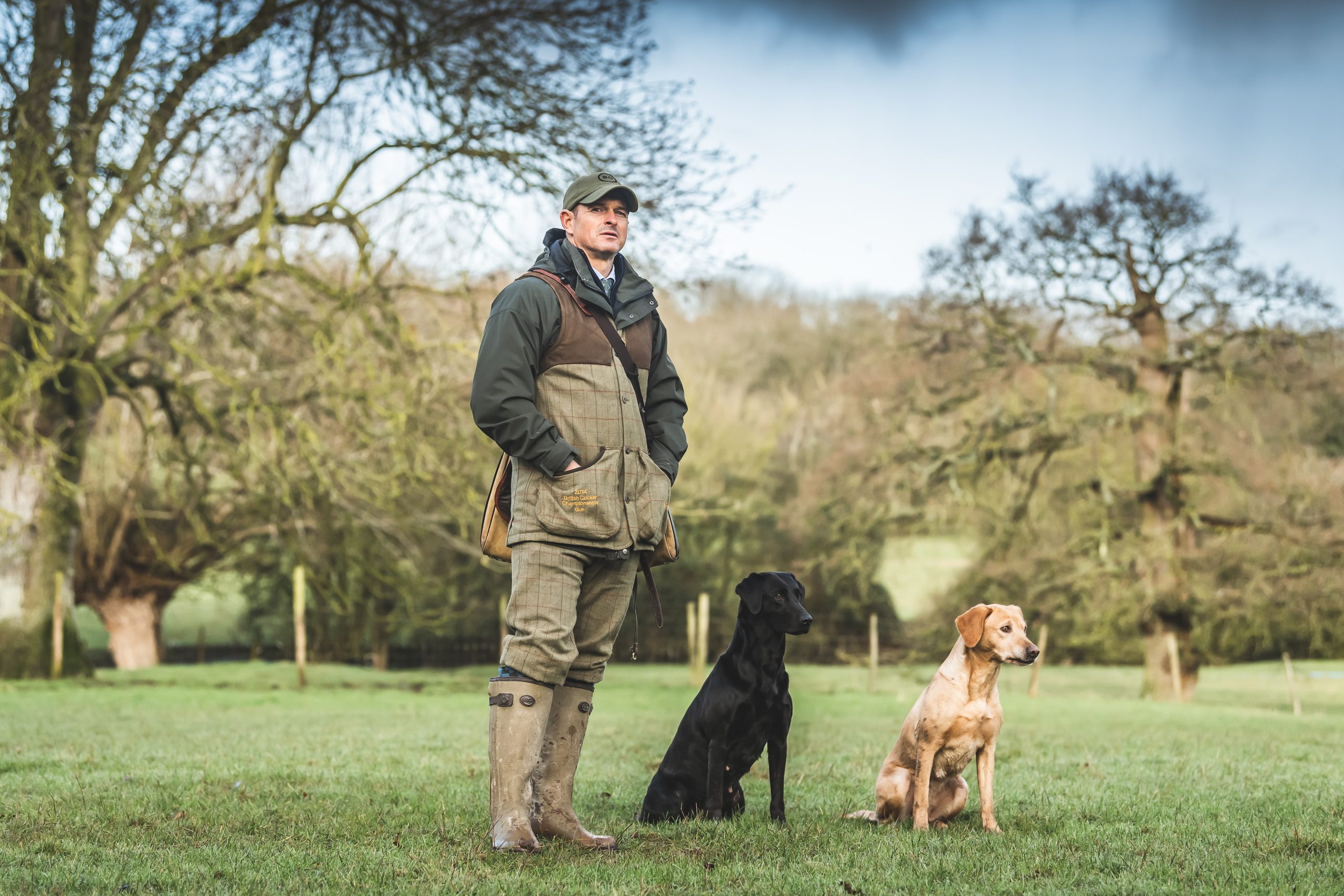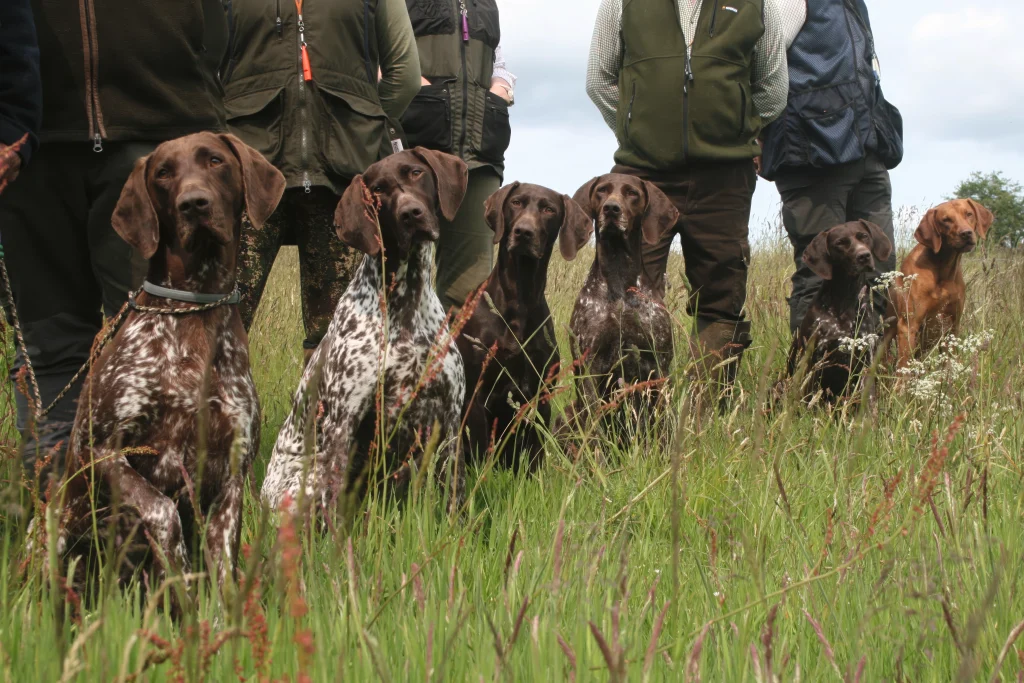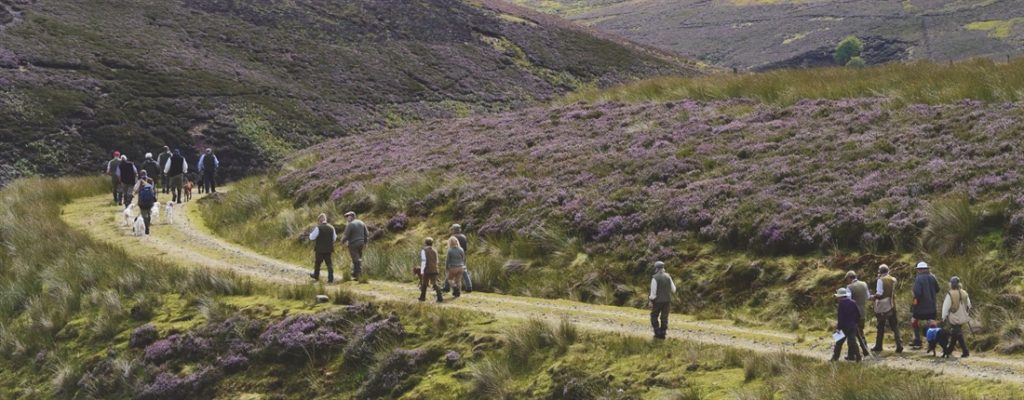From the law to the labrador
Retired police officer Vikki Stanley has been competing since 1988, and won the Chudleys Gundog Championship at the Midland Game Fair in 2019. Gundog Journal caught up with Vikki to find out about her life with dogs.
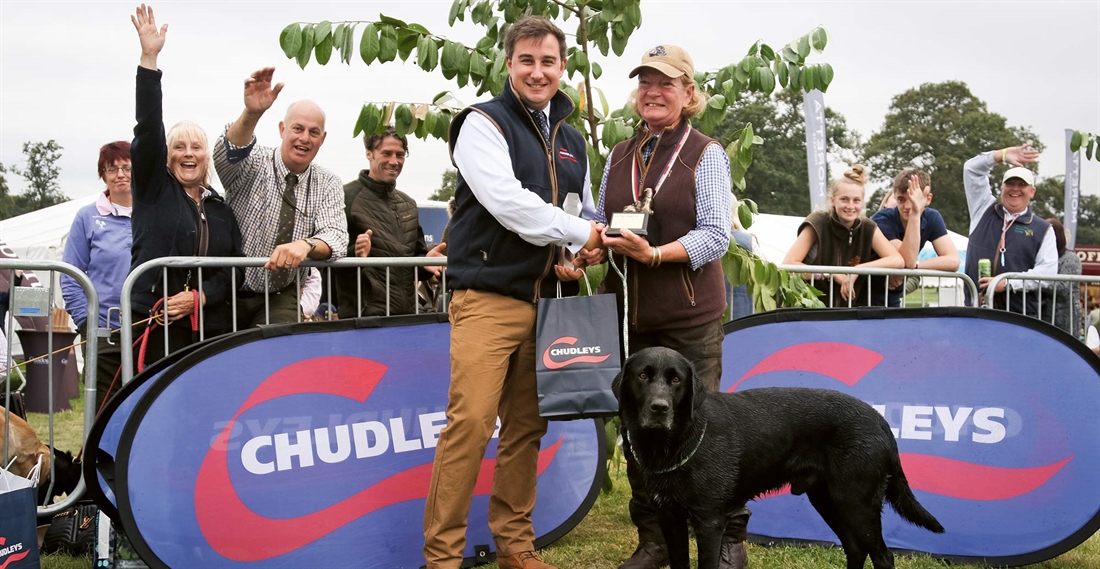
Tell us about your home life?
My husband Roger and I live in a Deganwy, Conwy, on the north coast of Wales. I was born in Lancashire but spent holidays in Wales so it felt natural to move here. I have five labrador dogs – all black. There’s Pip (eight years old), Bob (seven), Digga (two and a half), Odyn (two and a half) and my new puppy Gunny (six months). They all live in the house with us. Now that I am retired, I run my own soft furnishing business – mainly making curtains and loose covers – from the basement of my mother’s house. She loves having us visit every day and spoils my dogs by giving them endless Custard Creams.
What is your daily routine with the dogs?
I wake up at 6am then take the dogs for a 45 minute walk off the lead, but to heel along the coastal path towards Conwy. Once we reach the grassy area the dogs are allowed to play for 10-15 minutes. Back home they each get one scoop of Skinners dog food for breakfast – a mix of Working 23, Crunchy and Large Bite. Then the dogs and I go to my workshop for the day where they snooze under my work table. About 4pm I take them all out again for one hour of training. We go up Conwy mountain in the bracken or if it is raining we visit one of the three local golf courses (golfers do not play in the rain). Back home, they each receive two scoops of food for supper plus a tin of spaghetti or pilchards if picking-up the next day. They are fed from raised dog bowls, about 11 inches high from the floor. I find it helps to prevent them from gulping their food down. I do not have any children, so my dogs are very much treated as part of our family.
What exercises do you carry out when training?
I do a lot of long 300-yard blind retrieves. So as I am walking I will discreetly drop dummies and then send each dog back in turn in a straight line. The dogs really enjoy this exercise, especially as I give them a small biscuit treat once they have successfully retrieved the dummy. If I do not have any biscuits in my pocket, their reward is a pat and cuddle from me.
To practise directional control, I favour working them on the golf course where visibility is good. I always start on the right first. I raise my hand straight up as if I am trying to stop traffic, then drop it sharply to my right with the voice command ‘get on!’ Then when I do it on the left, I do the same thing again but give a different voice command – I say ‘los!’
I also like to do marked retrieves, sending each dog by name. This keeps them interested and alert. I tend to vary the exercises each day for the older dogs, and stick to the same exercise for pups until they have cracked it and are ready to move on to the next one.
Where do you go picking-up?
Roger and I pick-up on three local shoots: Coed Coch at Abergele, Golden Grove at LLanasa and Bodnant at Conwy Valley. We normally pick-up three or four days a week.
How did you get started in competing gundogs?
My sister is married to a gamekeeper – and 20 plus years ago I saw him working his dogs on their shoot and thought it looked fun. Back then I did not have a clue, so I bought myself a show strain chocolate labrador. He was a lovely dog. I could not trial him because he whined until lunch. He won numerous working tests however. Through trial and error I found my way. I now compete in 30-40 competitions a year, the length and breadth of the country. I have made up three field trial champions, plus I am a B-Panel judge and regularly represent Wales in the Welsh international team events. In the past year I have been to the Skinners World Cup, The Game Fair and Anglesey where our team won and Pip was top dog. I also travel abroad to the likes of Sweden and Italy to judge various competitions.
Tell us about your star labrador, Pip?
He is my best friend. He just loves life. He is a beautiful, big gregarious dog. Everyone comments on his size. He was obtained from my very good friends, Ian and Judith White who run Minstead Kennels near Mold. He was my second dog from them. When he was young he was very difficult to train. I had endless trips to the hairdressers to recolour my greying hair! He is a full-on dog and has been known to pull over men while he is waiting for me to return. The challenge with Pip is to get inside his head and channel his enthusiasm. I jokingly nicknamed him ‘Cliff Richard’ as he never seems to age.
You and Pip won the Chudleys Gundog Championship this year. How did that feel?
I had been judging at a field trial in Wrexham on the Saturday then high tailed it to the Midland Game Fair to qualify in the working test that afternoon, before going through to the finals on the Sunday. This was our fifth attempt, having come second the previous four years. Everyone was rooting for us. I was a bag of nerves. You never know what is going to happen on the day. As always Pip was fast. He went out in a straight line and picked every dummy cleanly. It all just came together for us. Winning is often down to chance, and the stars aligned for us that day. Once I realised we had won, I was overwhelmed with emotion. It was a very special day!
What have been your most notable wins?
Winning the Chudleys Gundog Championship this year, coming fourth in the IGL Championships with Bob in 2017 and representing Wales in 12 team events. And now I am really focussed on winning the IGL Championship.
Who do you turn to for training advice?
Once I was bitten by the bug, my friends Ian and Judith White and I would visit John Halstead of Brocklebank Labradors in Skipton for a day’s training once a fortnight. We did that for about six months. The advice he gave me is always stored in the back of my mind. Dave Latham, and Jayne Coley are also a font of information and knowledge. John’s nephew Simon Capstick is also great to talk to.
What parts of training do you always find tricky?
Heel work always lets me down. My older dogs tend to creep in front of me rather than staying to the side. However, once I had identified this as a weakness I could focus on ironing out this problem. I think I may have finally cracked it with my two youngest dogs.
What advice do you have for a newbie wanting to compete in field trials for the first time?
Watch and learn. Attend as a helper. The rules and regulations are always changing so it is important to keep up to speed with what’s going on. If you remember basic etiquette like thanking judges and the host you cannot go wrong. Always ask questions – we do not bite. And enjoy your day.
Related Articles
Get the latest news delivered direct to your door
Subscribe to Gundog Journal
Unlock the full potential of your working dog with a subscription to Gundog Journal, the UK’s only dedicated magazine for gundog enthusiasts. Published bi-monthly, this authoritative resource delivers expert training advice, in-depth interviews with top trainers and veterinary guidance to help you nurture a stronger bond with your dog.
With stunning photography and thought-provoking content, Gundog Journal is your essential guide to understanding, training and celebrating your working dog.
Save 10% on shop price when you subscribe, with a choice of packages that work for you. Choose from Print & Digital or Digital only with each journal delivered directly to your door or via the app every other month, plus access to past issues with the digital back issue library.



